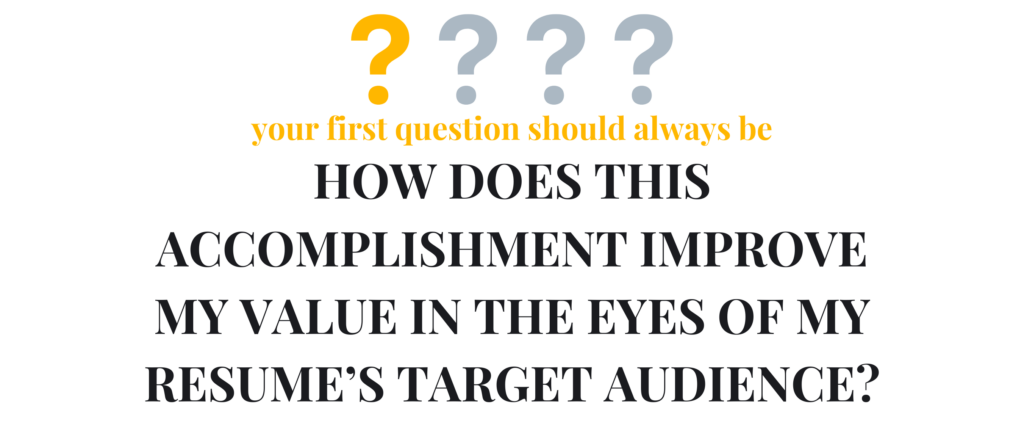
Are you an executive with an impressive multi-decade career and a memoir’s worth of accomplishments? Does this leave you uncertain about how far back your resume should go and/or how much emphasis to place on your early career? You’re not alone.
In most instances, it’s advisable to focus on your most recent experience and experience that is most relevant to your target job opportunity. This allows your resume to showcase your current skills and expertise and gives recruiters and hiring managers the best window into what skills you currently have to offer.
However, not all stories are the same. Perhaps you have relevant experience that’s not all that recent. Or maybe an older experience is key to the type of leader you’ve become or showcases a core value. The purpose of this article is to explore such considerations and provide guidance on how to weigh exceptions against the “rules” when it comes to early career experience.
What Does “Recent” Mean for an Executive Resume?
Typically, “recent” refers to your last 10-15 years of work experience. For most, this is enough of a window to showcase their unique value proposition across multiple positions. By focusing on the last 10-15 years, you will also have enough room to convey your accomplishments in detail and with clarity. However, there is no strict rule for how far back a resume’s focus should go, and numerous considerations may lead you to explore exceptions to the “10-15 year rule.”
There is no strict rule for how far back a resume’s focus should go, and numerous considerations may lead you to explore exceptions to the “10-15 year rule.”
What Does “Relevant” Mean?
If you haven’t heard it yet, please hear it now: you should adjust your resume each time you use it to target the specific jobs you are applying for. This usually won’t mean a massive revision, as, in theory, most jobs for which you apply will be in the same field. However, you should always and continuously ask yourself: is this bullet, this keyword, this accomplishment, etc., relevant to the posted job description to which I am responding?
The main reason to focus on “recent” job experience is that, most often, the last 10-15 years are the most relevant to your next position. They describe your most dusted-off expertise and most recently honed skills. However, this may not always be the case, as we will explore in the sections below.
Balancing “Recent” and “Relevant” on Your Executive Resume for a Specific Role
When deciding whether to include older job experience in your executive resume, your first question should always be, “How does this accomplishment improve my value in the eyes of my resume’s target audience?” A resume is a marketing document, not a comprehensive record of all the things you have done. By including irrelevant experience or experience not recent enough to add to your potential employer’s assessment of your qualifications, you risk overcrowding and causing your more recent and relevant experience to be lost in the clutter.

That said, perhaps you have 20 year-old experience that does showcase your ability to perform the roles outlined in your target job description in a way that your more recent experience does not. In this case, you may decide that a less recent accomplishment is relevant enough to include in your resume.
Career Progression Over 10-15 Years
It is important for your resume to display upward mobility and career growth. In certain cases, this may prove a challenging task when focusing on just 10-15 years of your career, especially if the majority of those years were spent at the same company. However, there are simple ways to convey career progression within a window of the past 10-15 years.
One such method would be to highlight promotions you may have received in your most recent position(s). For instance, rather than listing all the titles you’ve held at your current job under the same entry, list an entry for each job title, each with a new job summary highlighting what problems you were promoted to solve and how you solved them.
Another technique to highlight career progression is to use call-out boxes to draw your reader’s eye directly towards notable awards or achievements, clearly listing the applicable dates in order to show the trajectory of key accomplishments within a longer tenure.
The above notwithstanding, you may still have early career experience that displays impressive career progression and adds enough to your story to include in your resume. This would be yet another reason to bend the 10-15 year “rule” and include older work experience.
How to Present/Format Earlier Roles on Your Resume
Generally, for older or early career experiences, entries should be formatted differently from those of your more recent work experience. This is because, most likely, the entire scope of your tenure at these early employers will not be as relevant to your target next role. Instead, you are usually using these early career entries to highlight career progression or specific achievements and responsibilities that may be impressive to a hiring manager or recruiter. Your goal is to convey these accomplishments without lengthening the overall document in a way that draws attention away from more recent experiences.
A common technique for accomplishing the above is to create a new section, separating your early career from the main “Executive Experience” or “Professional Experience” section of the resume. This section might be titled “Early Career Experience” or simply “Early Career” and will include entries with all but the most relevant experience stripped away.
It may be that by simply listing company names and job titles, you are able to convey the career progression you’re hoping to highlight. Or perhaps you only need a single bullet under a given entry to showcase the specific experience behind its inclusion.
There are no hard rules here. However, by keeping the “Early Career Experience” section as lean as possible, you’ll be able to both keep the overall document from becoming too lengthy and you’ll also draw the reader’s eye to the specific relevant experience you’re hoping to highlight.
This leanness will keep your reader from dismissing (that is, not reading) your early career entries due to a learned assumption that there may not be relevant experience in a more extended block of text describing early career positions. A single bullet or a clear, sparse timeline will catch their eye quickly and ensure you get your point across.
Conclusion: Strike Balance while Remaining Flexible
As with so many considerations regarding executive resumes, there is no hard and fast rule for when to include early career experience and when to hew more closely to the 10-15-year rule. Most often, you’ll want to strike a balance between showcasing recent experience and conveying career progression.
To do this, always remember to consider your reader. Ask: will the inclusion of any given early achievement increase my value in the eyes of my target recruiter or hiring manager? If the answer is yes, use the techniques outlined above to detail early career roles in ways that avoid taking focus away from other relevant experiences and strategically highlight their importance to your reader.
